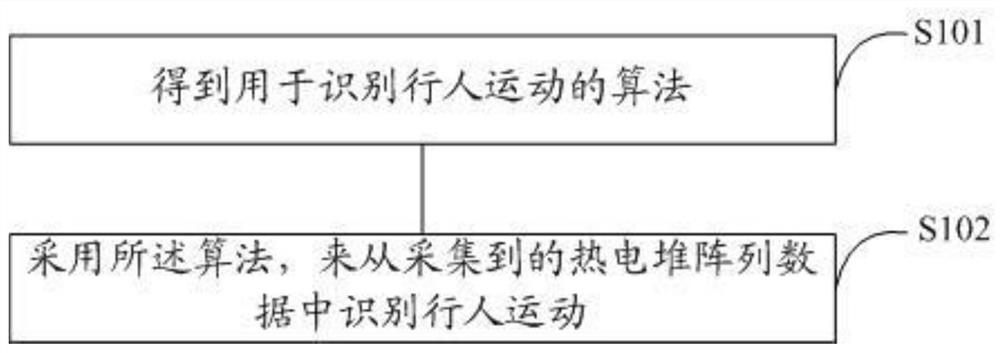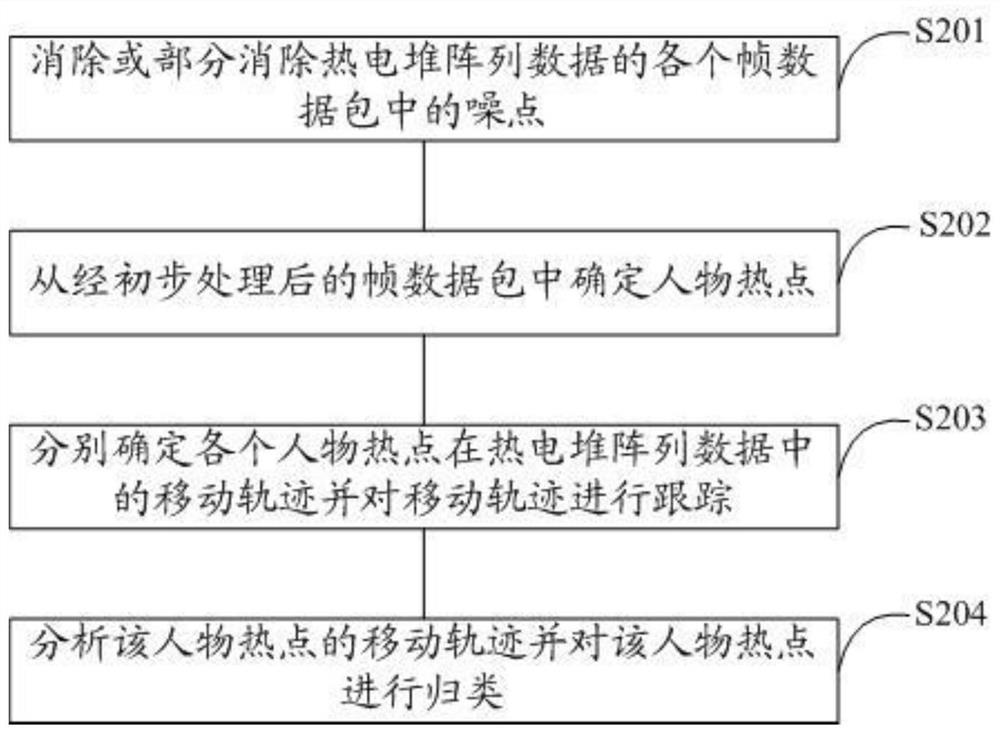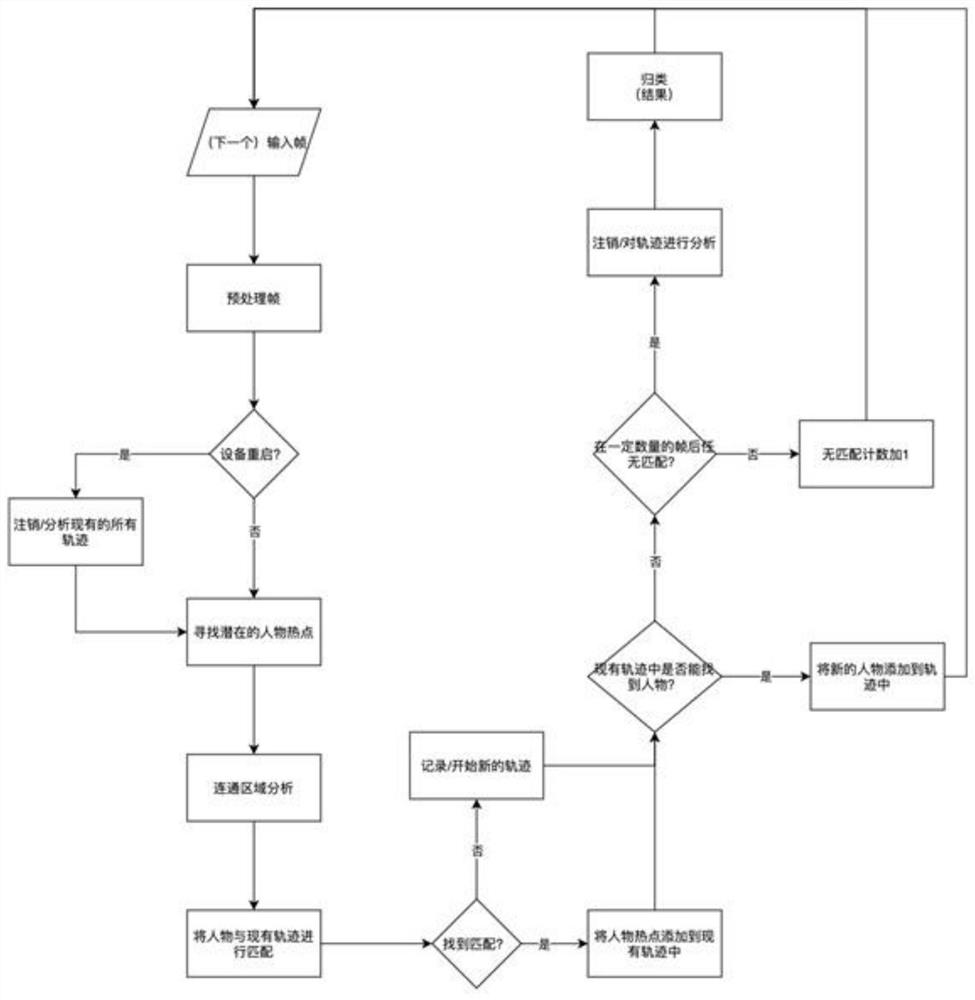Pedestrian motion identification method, device and equipment
A motion and pedestrian technology, applied in the field of pedestrian motion recognition, can solve the problems of slow response speed in the recognition and tracking process, low accuracy rate of pedestrian motion recognition, and high training cost, so as to save training cost, save computing power, and reduce computing power. volume effect
- Summary
- Abstract
- Description
- Claims
- Application Information
AI Technical Summary
Problems solved by technology
Method used
Image
Examples
Embodiment 1
[0066] As described below, an embodiment of the present invention provides a method for identifying pedestrian movement.
[0067] refer to figure 1 The flow chart of the method for identifying pedestrian movement is shown as follows:
[0068] S101. Obtain an algorithm for identifying pedestrian movement.
[0069] After the data is collected by the thermopile array sensor, it is necessary to process the algorithm to identify pedestrian movement from the collected data. In this embodiment, an algorithm for identifying pedestrian movement from the collected thermopile array data is established in advance.
[0070] The difference from the prior art is that this embodiment abandons the machine learning scheme in the prior art, saves the training cost of machine learning, and uses a series of technical means to speed up the operation speed of the algorithm and improve the performance of the algorithm. Accuracy, while having better noise resistance and plasticity (using modular de...
Embodiment 2
[0117] As described below, an embodiment of the present invention provides a device for identifying pedestrian movement.
[0118] Devices that recognize pedestrian movement include:
[0119] a processor adapted to load and execute instructions of a software program;
[0120] A memory adapted to store a software program comprising instructions for performing the following steps:
[0121] obtain an algorithm for recognizing pedestrian movement;
[0122] Using the algorithm to identify pedestrian movement from the collected thermopile array data;
[0123] Wherein, the algorithm identifies pedestrian movement from the collected thermopile array data in the following ways, including:
[0124] Eliminate or partially eliminate the noise in each frame data packet of the thermopile array data, and obtain the frame data packet after preliminary processing;
[0125] Determining hotspots of people from the preliminarily processed frame data packets;
[0126] Determine the moving traj...
Embodiment 3
[0130] As described below, an embodiment of the present invention provides a device for recognizing pedestrian movement.
[0131] The difference from the prior art is that the device for identifying pedestrian movement uses the method for identifying pedestrian movement provided in the embodiment of the present invention to identify pedestrian movement from the collected thermopile array data. Therefore, the equipment that recognizes the movement of pedestrians can save the training cost of machine learning, save the computing power of the training process, and at the same time, the response speed during operation is faster.
[0132] Those of ordinary skill in the art can understand that in the various methods of the above-mentioned embodiments, all or part of the steps can be completed by hardware related to program instructions, and the program can be stored in a computer-readable storage medium, and the storage medium can include : ROM, RAM, disk or CD, etc.
PUM
 Login to View More
Login to View More Abstract
Description
Claims
Application Information
 Login to View More
Login to View More - Generate Ideas
- Intellectual Property
- Life Sciences
- Materials
- Tech Scout
- Unparalleled Data Quality
- Higher Quality Content
- 60% Fewer Hallucinations
Browse by: Latest US Patents, China's latest patents, Technical Efficacy Thesaurus, Application Domain, Technology Topic, Popular Technical Reports.
© 2025 PatSnap. All rights reserved.Legal|Privacy policy|Modern Slavery Act Transparency Statement|Sitemap|About US| Contact US: help@patsnap.com



